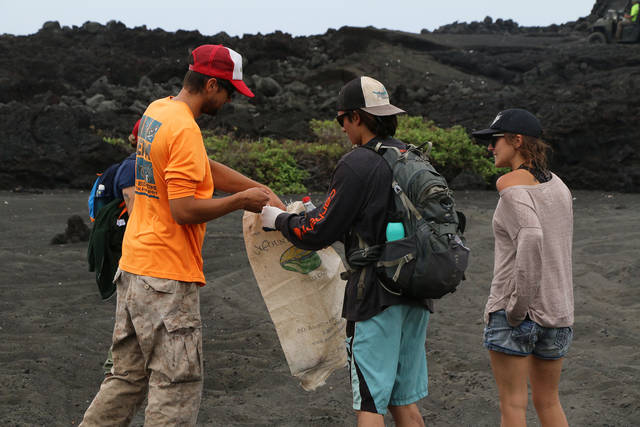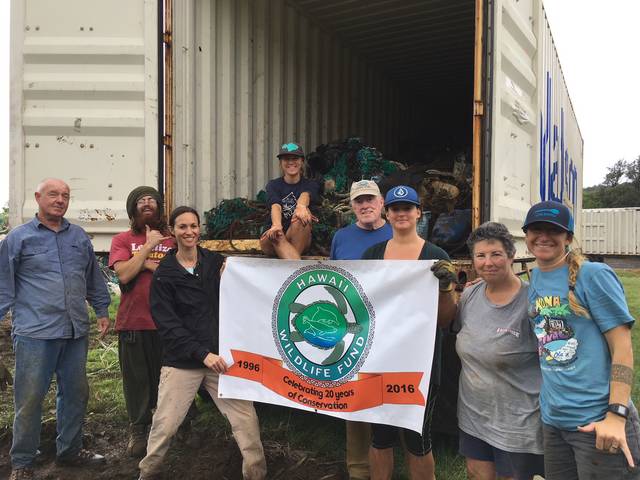KAILUA-KONA — The coastal shores are swimmingly cleaner, thanks to the volunteer work of the Hawaii Wildlife Fund.
The nonprofit, HWF, recently celebrated collecting 250 tons of marine debris on the Big Island since 2003 — equivalent to more than 515,000 pounds.
“When we started Hawaii Wildlife Fund back in 1996 we had no idea that our work would end up being so meaningful in terms of working on this marine debris issue and that we would be leaders in the field,” said Hannah Bernard, the Hawaii Wildlife Fund co-founder and executive director.
What does that much waste look like? It looks like a lot.
“It’s hard to envision 250 tons of marine debris,” said Megan Lamson, HWF president. “But if you can picture the largest trucks possible and fill each of them to the brim with plastics, nets, and all the other stuff that washes onto the reefs and onto shore, you get an idea of the scope of our efforts.”
In recognition of their achievements, the group received a Department of Land and Natural Resources &You Citizen Conservationists Award.
“It means the world to us to be acknowledged for the work that we do because that means that people will pay attention, because the work that we do is dependent on all of us,” said Bernard.
Over 43,000 volunteer hours were dedicated to beach cleanups and debris removal in the past decade.
“Volunteers, our community, that is our power — that’s our force,” said Bernard. “If we didn’t have the involvement of all of our volunteers we would be so much less effective.”
The Hawaii Wildlife Fund is dedicated to the conservation of Hawaii’s native wildlife through research, education and advocacy. Through beach cleanups, educational and conservation projects, and partnerships with other organizations, HWF has made a difference in the appearance of coastlines and keeping debris from washing back into the ocean, preventing harm to marine life.
An example of HWF’s work is Kamilo Beach, near South Point, also known as “plastic beach,” where tons of debris wash ashore every year. When entangled rope or fishing net is present, the HWF staff and volunteers will cut the material into reduced, manageable sizes and haul it onto shore. The debris is then loaded into pickup trucks, taken to a rubbish transfer station and shipped to Oahu where it contributes to the fueling of the H-Power plant that is responsible for producing electricity to the island.
For over a decade, the HWF has also provided strength and support for the major beach cleanup along the coastal section of the Manuka Natural Area Reserve.
Many of the debris collected are recycled. HWF works to reduce, reuse and repurpose the debris and makes efforts towards stopping the debris flow.
Anyone looking towards conserving the environment can start through the simple acts of lessening plastic and foam use, and selecting a personal, preferred place to conserve.
“Pick your favorite place. Pick your favorite beach and go adopt it and clean it and pull the plastics off the beach,” said Bernard. “If everybody picked their favorite place, then maybe the whole world would be taken care of.”
For more information on the Hawaii Wildlife Fund, visit https://www.wildhawaii.org/



